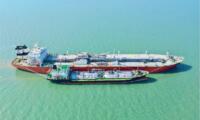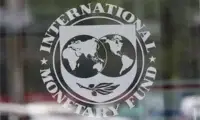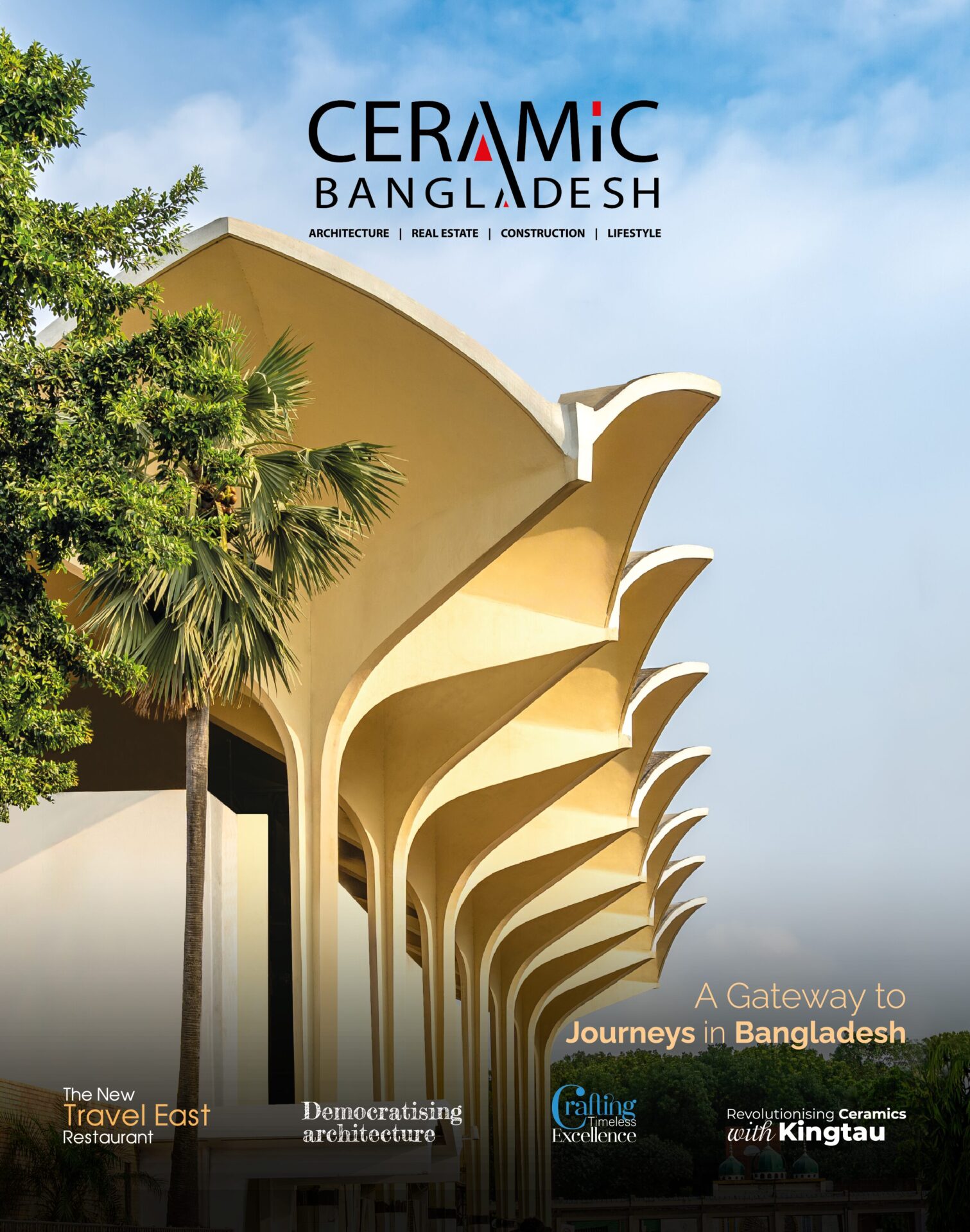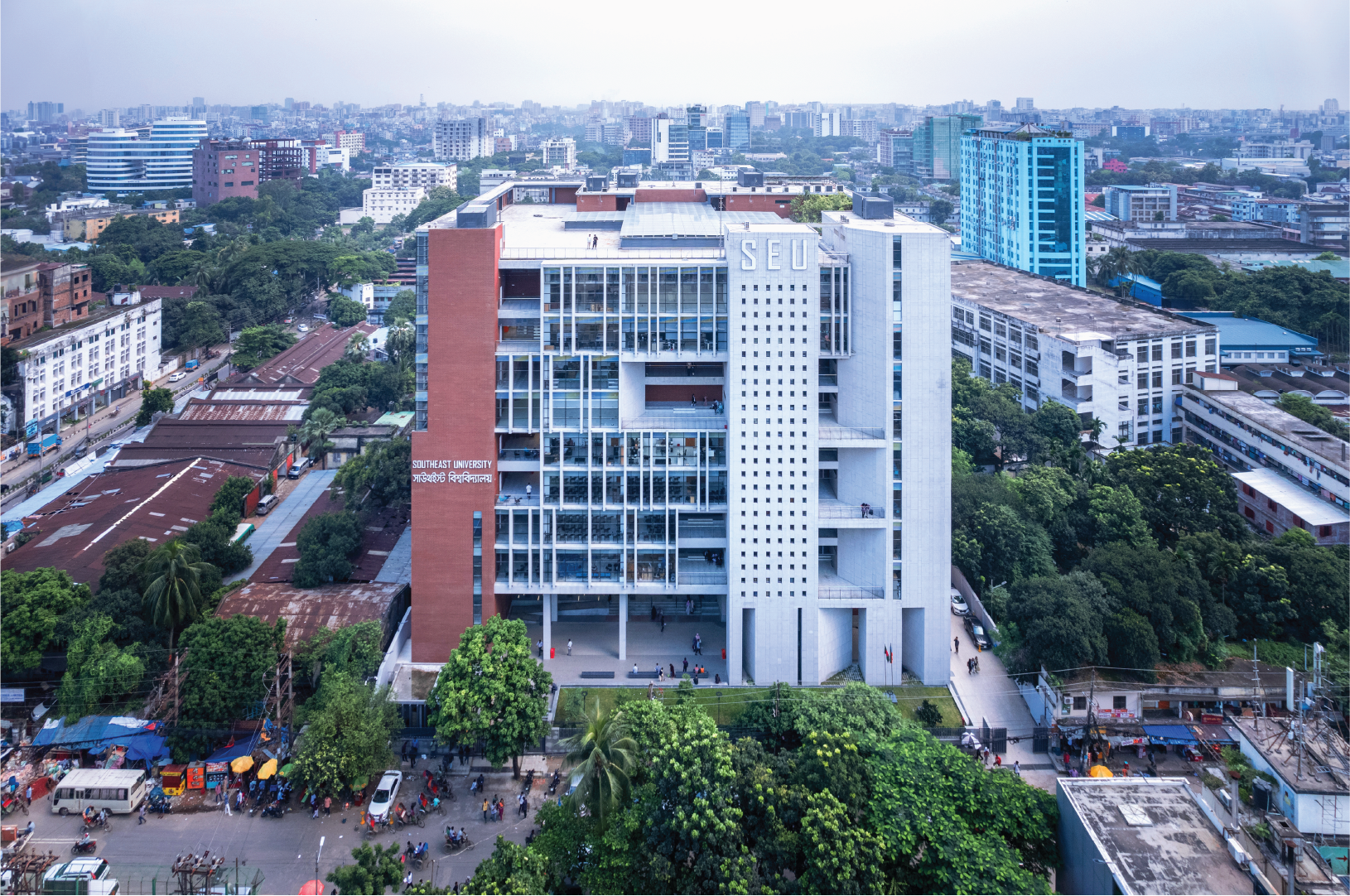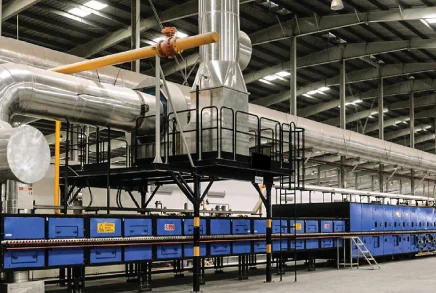
The First Dhaka Elevated Expressway (FDEE) is called a ‘new milestone’ in communications and the project is being implemented under Public-Private Partnership (PPP) arrangement to alleviate traffic congestion in and around the capital.
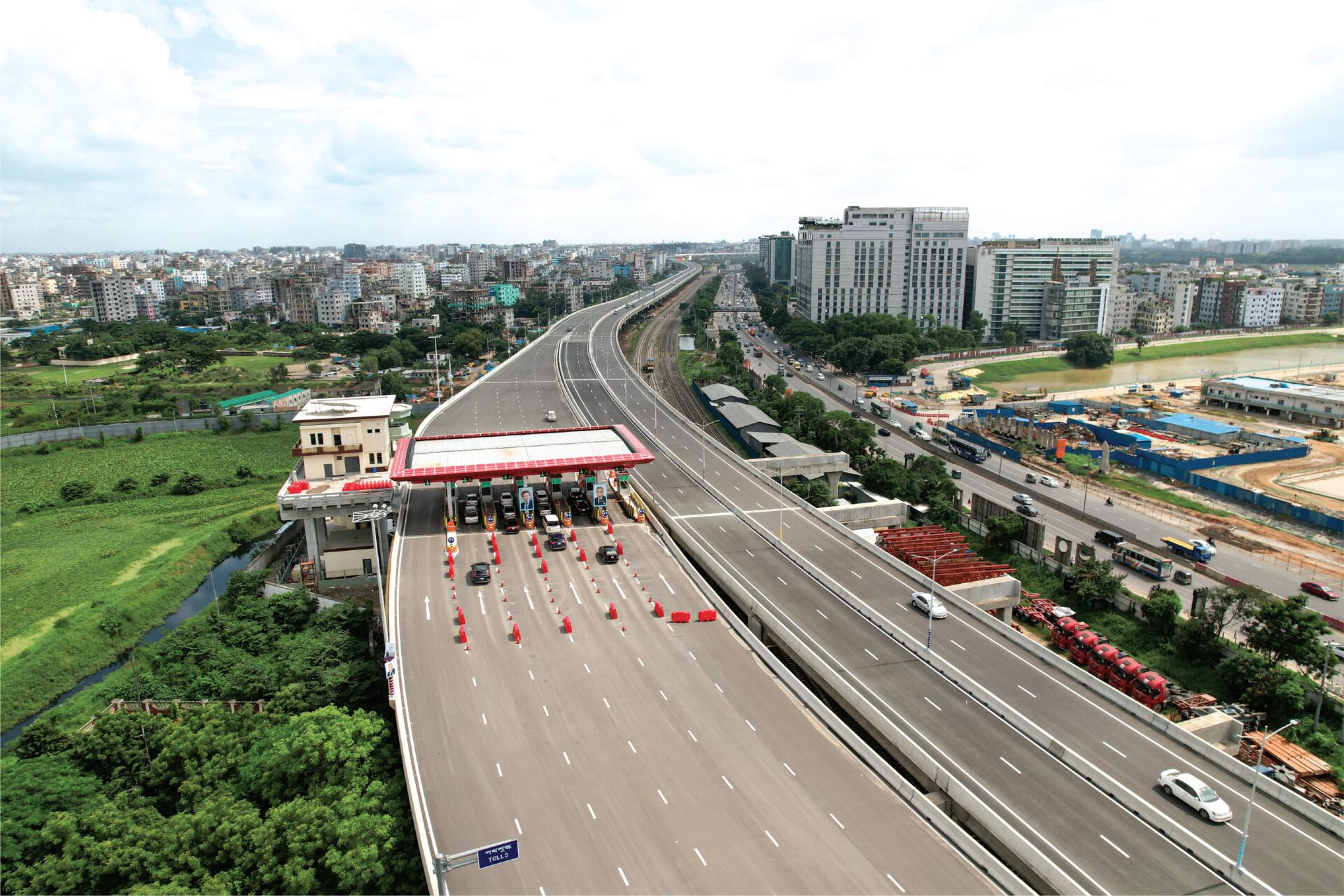
It has already been visible after inauguration of a portion of total of 46.73-kilometre-length with ramps, including a main elevated section spanning 19.73 km in the city. Prime Minister Sheikh Hasina inaugurated the 11.5 km part of it between Hazrat Shahjalal International Airport and Farmgate section, on September 2 with the key objective to shorten the lead time for exports and imports activities. Now people can travel the Airport-Farmgate site in 10 minutes thanks to the FDEE inauguration in the densely populated city. It often takes two hours to travel the 11.5 km due to severe traffic congestion.
According to the First Dhaka Elevated Expressway Company Ltd, the total of 46.73-km-long elevated expressway is covering Airport, Kawla, Kuril, Banani, Mohakhali, Tejgaon, Magbazar, Kamalapur, Sayedabad, Jatrabari to Kutubkhali on the Dhaka-Chattogram highway. The entire expressway is expected to be opened for vehicles from Tejgaon to KutubKhali in June 2024. The FDEE project involves construction of a four-lane main carriageway and one elevated link road, comprising: four-lane dual main carriageway of a total length of 19.73 kilometers. It has a four-lane dual link-road carriageway of a total length of 3.1 kilometers. 32 on-off ramps including 16 on-ramps and 16 off-ramps (one-lane carriageway of 5.5 meter width) of a total length of 23.9 kilometers with 8 toll plazas and 43 toll collection booths. Besides the main four-lane dual carriageway and two suspended termini at its ends, it has five interchanges, two elevated links. The approximate total length of the main carriageway Expressway is about 46.73 km including 19.73 km main flyover and 31 km ramps and elevated links. Dhaka-Ashulia, Dhaka-Narayanganj and Dhaka-Chittagong expressways will also be connected with this elevated expressway in future.
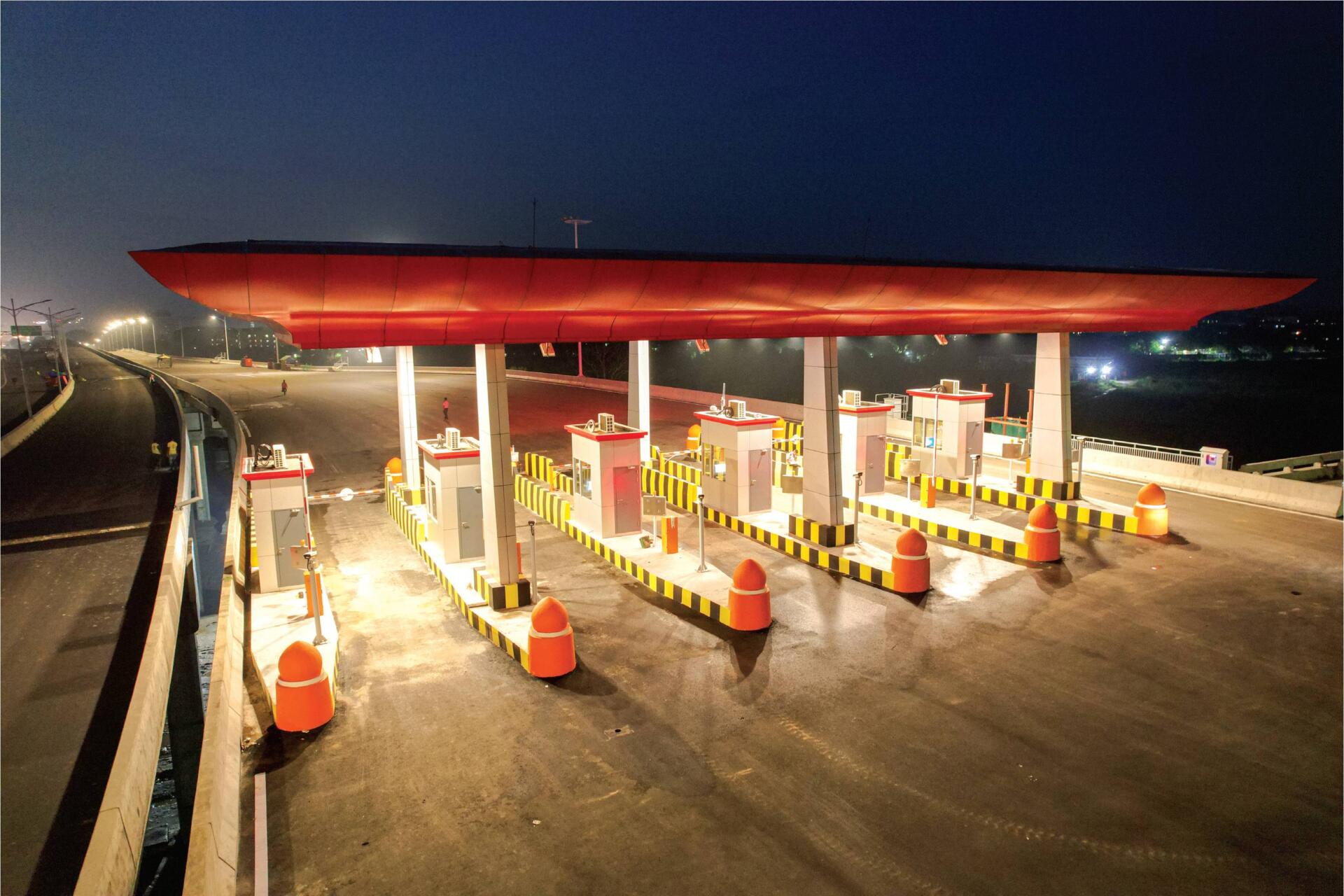
The project is one of the largest infrastructure projects taken up by the incumbent government spending a total of Tk 13,858 crore to ease traffic congestion. Of them, the cost of Airport-Farmgate section was Tk 8,940 crore. However, the FDEE project is being implemented under the PPP process between the government of Bangladesh, represented by the Bangladesh Bridge Authority (BBA), and the Italian-Thai Development Company Limited (ITD Group), represented by the First Dhaka Elevated Expressway (FDEE) Co. Ltd. According to the authority, around 80,000 vehicles can run on the FDEE a day. Chinese firm China Shandong International Economic and Technical Corporation, one of the three private partners of the PPP project, will operate the control centre. The FDEE is offlimits to three-wheelers and motorcycles. Other vehicles run on the structure at a maximum speed of 60km per hour in expressway and 40km per hour in ramps at the beginning. BRTC bus services commenced on the Expressway. The non-stop service, which began initially, runs with eight double-decker buses from Farmgate to the Airport. Road Transport and Highways authority said cars, SUVs, microbuses with fewer than 16 seats, and trucks with a capacity of less than three tonnes will pay Tk 80 for using the expressway. Trucks with six wheels will pay Tk 320, those with more than six wheels Tk 400, and buses with 16 or more seats Tk 160. Payment is being processed through e-ticketing.
Local construction industries are thriving
At least 10 local companies are making and supplying materials, such as cement, steel, stone and paint, for constructing the country’s first elevated expressway. Local products in place of imported alternatives are also being used in this mega project. This is not only saving foreign currency but also building the capacity of the local companies. A major portion of the Tk 8,940 crore project is being constructed using local materials. Of the 10 local contributors, six are cement companies while two are steel makers and the others make paint and PVC products. The cement makers are: Shah Cement, Crown Cement, Bashundhara Industrial Complex, Heidelberg Cement, Seven Rings Cement and Premier Cement. The BSRM and GPH Ispat are providing steel for the project while two concerns of RFL Group — RFL Pipe and Fittings, and Rainbow Paints — are supplying necessary pipes and road marking materials. RN Paul, managing director of RFL Group, said they are providing waste and rainwater pipes and fittings for the drainage system of the elevated expressway as well as road marking materials. Mr Paul explained that if local companies do not provide the required construction materials, then they would have to be imported at the cost of huge sums of foreign currency. “So, local companies benefited and also the process helped save foreign currency through such cooperation,” he said. Till September 2023, a total of 66,000 tonnes of steel has been used in the elevated expressway project, with BSRM contributing a majority 52,000 tonnes (80%). Tapan Sengupta, deputy managing director of BSRM, acknowledged that involvement in this type of large project helps local construction material companies grow their capacity and achieve global standards. Sheikh Masadul Alam Masud, founder chairman of the Bangladesh Steel Manufacturers Association, said the local steelmaking capacity has nearly doubled to about 9 million tonnes over the past decade. Local cement manufacturers have increased their production capacity to 6 million tonnes per annum while it was 2 million tonnes annually just 10 years ago.

Back to history In January 2011, the certificate authority (CA) was signed between Bangladesh government, represented by Bridges Division, the Ministry of Road Transport and Bridges, acted through Bangladesh Bridge Authority (together the “grantor”), and First Dhaka Elevated Expressway (FDEE) company limited (the “concessionaire”). The ITD, the largest construction company in Thailand, established first Dhaka Elevated Expressway Company Limited (“FDEE”) as a 100%-owned special purpose vehicle, registered in Bangladesh, to accede ITD as the concessionaire in the concession agreement for implementation of the project.
The BBA signed deal with Italian-Thai Development Public Company to build the FDEE at a cost of Tk 8,703 crore in January 2011. The agreement was revised and inked again in December 2013 with a revised cost of Tk 8,940 crore after bringing several changes to the design.
According to the deal, the government will provide Tk 2,413 crore (27 percent) as ‘viability gap funding’ while the private partner or three companies from Thailand and China will bear the remaining 73 per cent of the construction cost.
Besides, the government is to spend Tk 4,918 crore on land acquisition, resettlement and relocation of utility service lines, meaning the total cost of the project is Tk 13,858 crore. But the scheme faltered time and again over the years mainly due to the failure of Italian-Thai to manage funds and problems related to land acquisition. However, the fund-related crisis was resolved after Italian-Thai handed over 49 percent of its share to two Chinese companies — China Shandong International Economic and Technical Corporation Group (34 percent) and Sino Hydro Corporation Ltd (15 percent) in 2020.
As per the deal, investors will collect their investment and profit from the toll earnings in 25 years (excluding the 3.5 years’ construction period). And, Bangladesh will regain ownership of the expressway after 25 years. However, in 2005, the government approved a 20-year Strategic Transport Plan (STP) for Dhaka that included various proposals for the construction of Metro rail, elevated expressway, ring road and so on.
International clothing retailers and brands have shortened lead times to 60 to 45 days, and sometimes even to 30 days, to ensure quick delivery of goods. As a result, local businesses opt for expensive air shipments to meet the strict lead-time requirements set by international trading partners, necessitating faster movement of vehicles.
It would also open up new prospects for the country enabling the goal of local and export-oriented industrialisation-led economic transformation. The much-needed FDEE will allow exporters from Gazipur and Savar to easy access to Chattogram and Mongla ports steering the cost and time-efficient local and cross-border trade growth of Bangladesh.
According to a study by the Accident Research Institute of Bangladesh University of Engineering and Technology (BUET) in 2018, Bangladesh loses Tk 37,000 crore and five million working hours annually due to heavy traffic congestion in Dhaka. The operations of the expressway are expected to address these losses to a great extent.
Business advantages
The mega-infrastructure project will significantly reduce both time and cost of doing business. The expressway would also help boost trade and play a big role in the country’s economic growth, according to economists and business community.
The FDEE will be real game-changer for the export industries and also give relief to their buyers. With this development, export cargoes can smoothly traverse from the Airport to Gazipur, Ashulia and Jatrabari area. Traffic congestion has been a longstanding issue in the city, especially for buyers arriving at the airport from different countries.
Immense implementation challenges
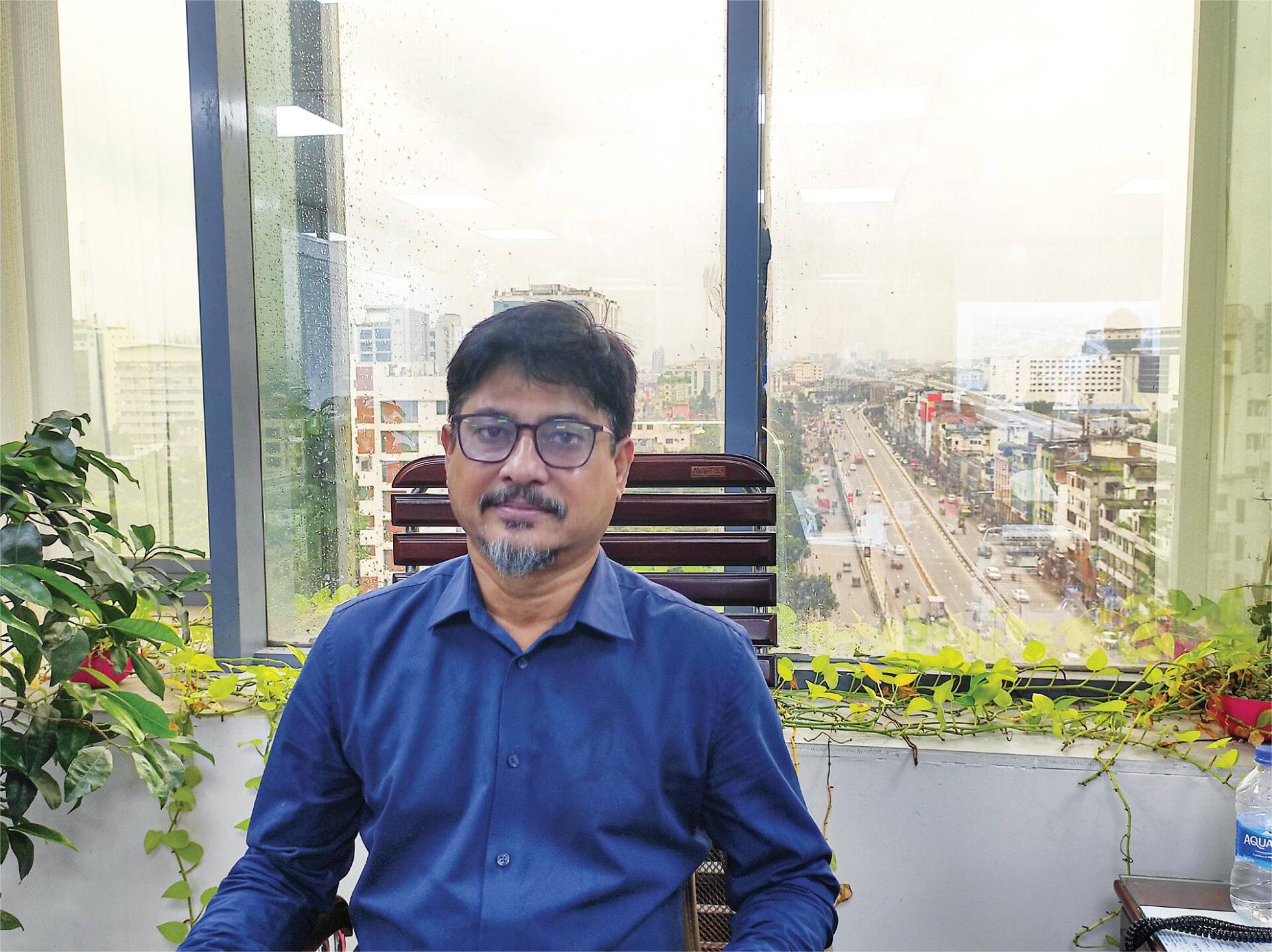
In an exclusive interview with the Ceramic Bangladesh (CB), the FDEE Project Director Abe Humayan Md Shakhawat Akter said there were a lot of challenges to set up the FDEE as it has been constructed in the heart of the capital. “We used a total of 215 acres land to build the FDEE. Of this, only 30 acres land is private. This land has been completed acquisition. The rest of lands are different state run-organisations such as 128 acre lands of Railway, 16 acres of Civil Aviation Authority, and others are RAJUK, Dhaka North and South City Corporations. We took the lands for 99 years,” he said. “Besides, the Railway’s four lanes work is going on between Banani and Kamalapur. It was another problem to set up pillars of the FDEE. Alongside it, there were many buildings and utility lines which we had to remove carefully. As trains were operated on the lines daily so we have to move cranes and other machines after 12 am to dawn.” He added, “We had to coordinate among many organisations as there are different projects including MRT lines and flyovers. Finance collection was key challenge since its initial stage. Now there is no problem of finance. However, overall 66 per cent work of the FDEE has already completed.”
Role in reducing traffic jam
The Project Director said that more than 30,000 vehicles run on the express way daily. “Those vehicles used to remain on roads if we did not build the FDEE. So a pressure of huge vehicles decreased from the roads thanks to the FDEE. Now people can go to airport from Farmgate at 10/12 minutes. Three and two wheelers vehicles will never be permitted to run on the FDEE.” “We have an agreement of 25 years between the government and the investors. After construction period, the investors will collect tolls upto 25 years. Later, they will hand over the FDEE to the Bangladesh government. The work for drainage system is going on. After completion of the project, there won’t any problem. However, we are hopeful that the project will be completed within the estimated timeframe. Now, people won’t get all benefits. They have to wait until the project completion in 2024. If the connection is between Chittagong road and Airport’s Kawla, we hope that people will get relief from existing severe traffic jam, and get full benefits.”
Issue of sustainable development
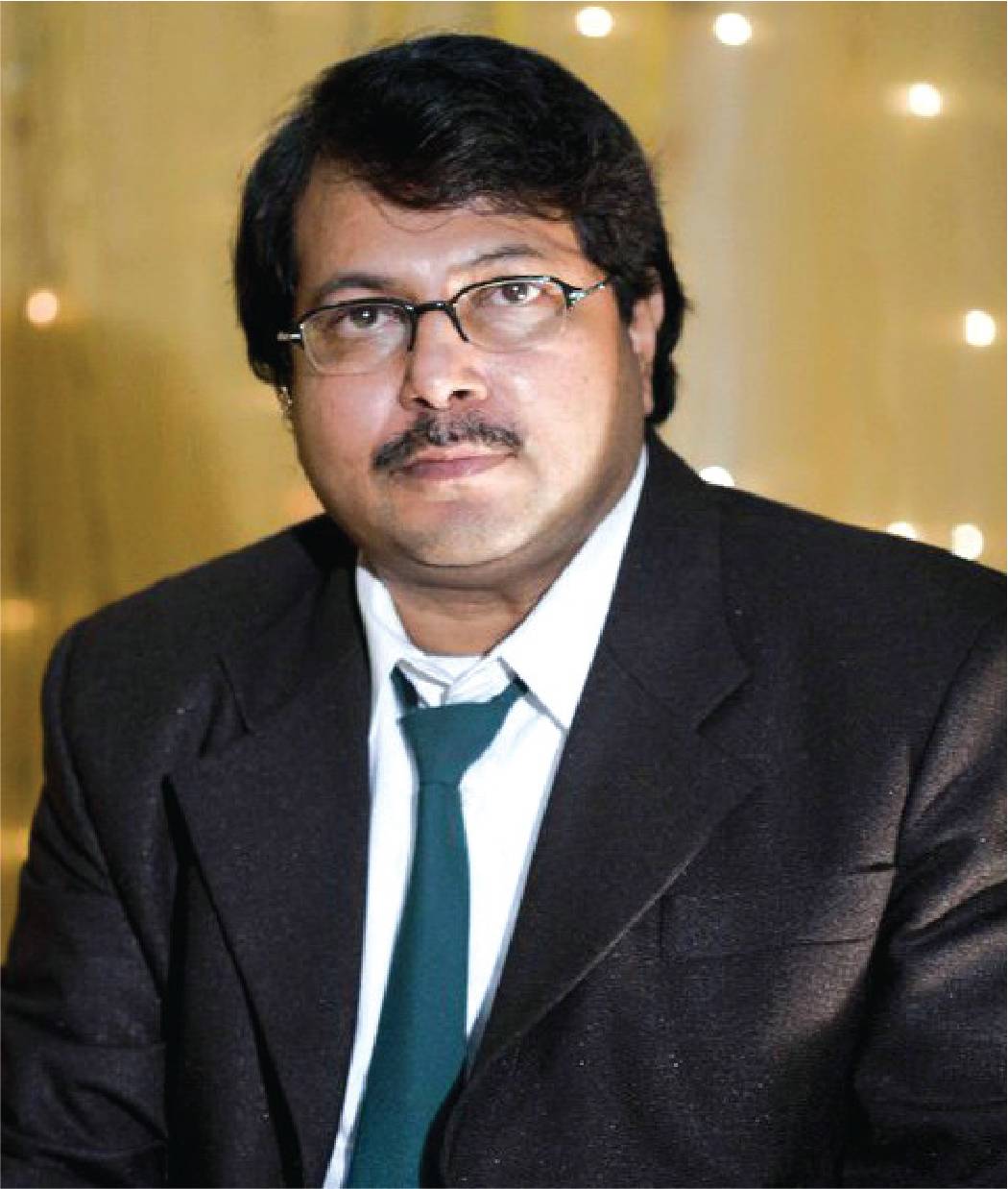
Professor Dr. Md Shamsul Haque, Department of Civil Engineering of Bangladesh University of Engineering and Technology (BUET), told Ceramic Bangladesh that “the sustainable development issue should be considered before implementing mega projects. Though it is tough to evaluate on the partial inaugurated project, we noticed a severe traffic jam in busy intersections during peak-time after inaugurating a part of the FDEE.” However, it is a PPP. So, all things including toll collection will be managed by investors. If toll is collected at higher rate, the government can’t tell anything. But, toll has to be revised after three years. The government took the initiative to reduce traffic jam in the capital, and invited the investors. Later, investors came here and the government managed land. He cited an inconsistency in implementation of the project saying that mega projects were taken on the same sites in the capital. For example, the FDEE project was taken on another project of the Ministry of Railways. As a result, the Railways Ministry had to stop their development project. “The government has to coordinate all things. But there is a lack of coordination. The government has to provide land in PPP projects, not the fund. Besides, the government is also responsible for rehabilitation.” However, the effective drainage system is important for the FDEE so that water can move easily during heavy rainfall. Besides, keeping proper footpath is crucial in the densely populated areas.
Multimodal transport system the panacea
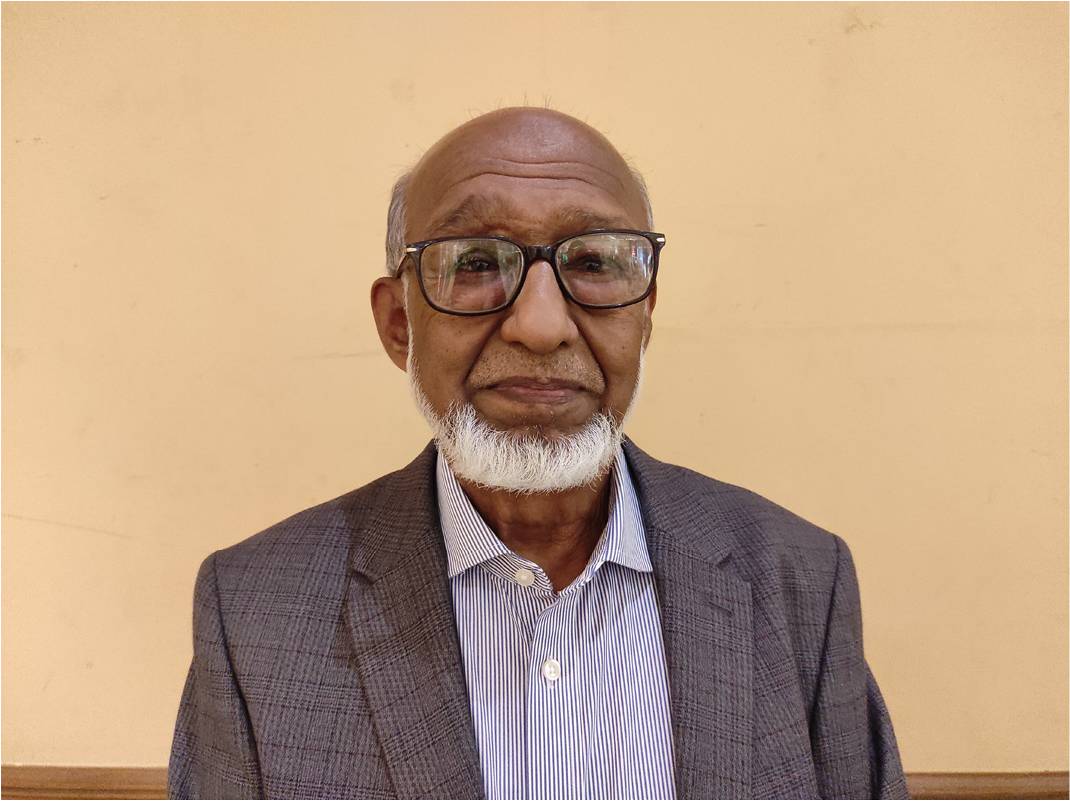
In another interview with the CB, the Director of Infrastructure Development Company Limited (IDCOL), and also Managing Director of Haq’s Bay Automobiles Limited Abdul Haque said basically the FDEE was initially started by Quamrul Islam Siddique, former Chief Engineer of Local Government Engineering Department (LGED). It was a concept of Bus Rapid Transit (BRT) of Bogota city of Colombia. Since then, he was advisory board member Strategic Transport Plan for Dhaka (STP) in Bangladesh. So, he knew details about the FDEE. Abdul Haque, also former president of Bangladesh Reconditioned Vehicles Importers and Dealers Association (BARVIDA) said, in a densely populated country like Bangladesh, it needs to develop the rail transport so that huge people can commute at reasonable fare. “To resolve total traffic jam in the country, we need to lay emphasis multimodal transport system like rail, road and waterways. The transportation is a pre-condition for development in a country. Our various complexities contribute to increasing costs,” he added. “We need to run small normal train to move from one district to another. Then, people will come to Dhaka for job in morning and go back in afternoon. Traffic pressure in Dhaka will decrease vastly. But we made mistake by spending huge money in unnecessary projects. The entire traffic situation will not be resolved entirely by the FDEE. Our projects should be of international standards, then it may help to bring more foreign direct investment (FDI).”
Written by Rafikul Islam



